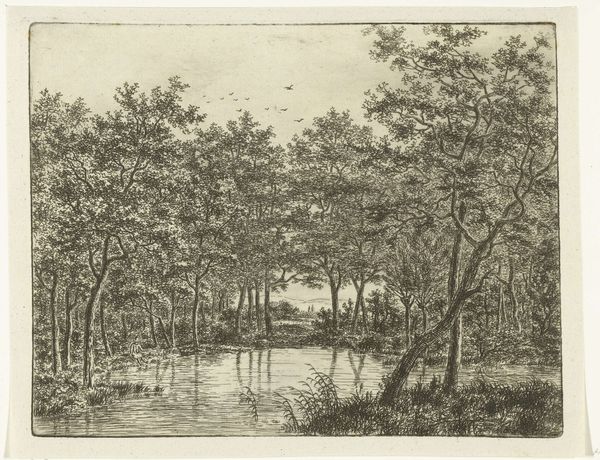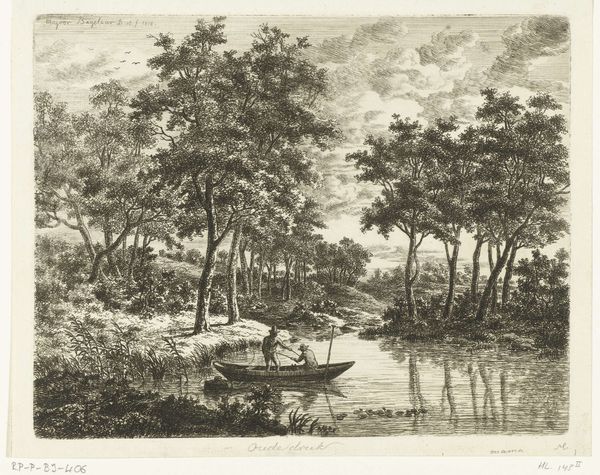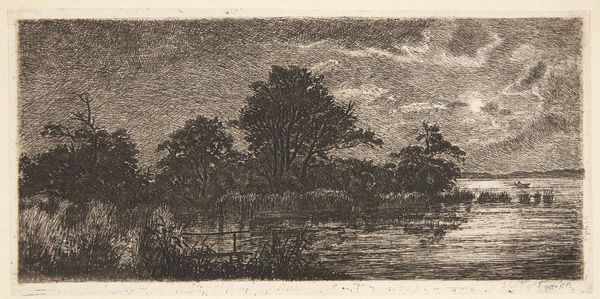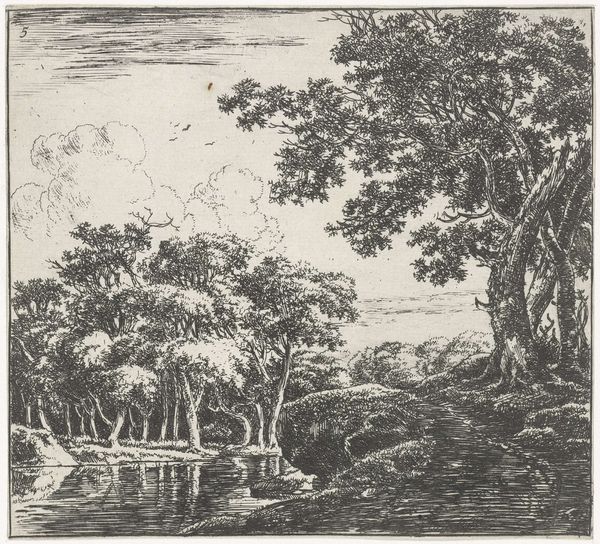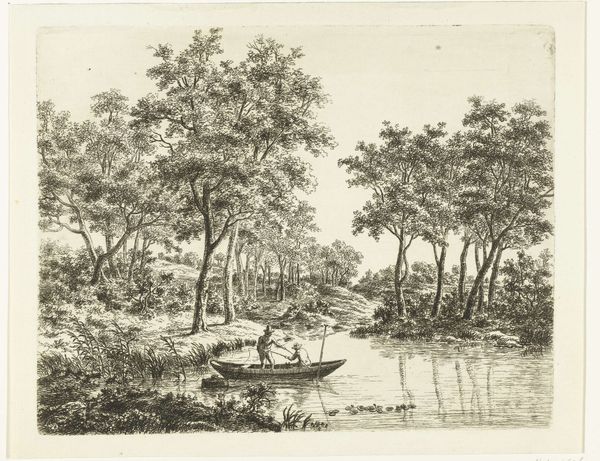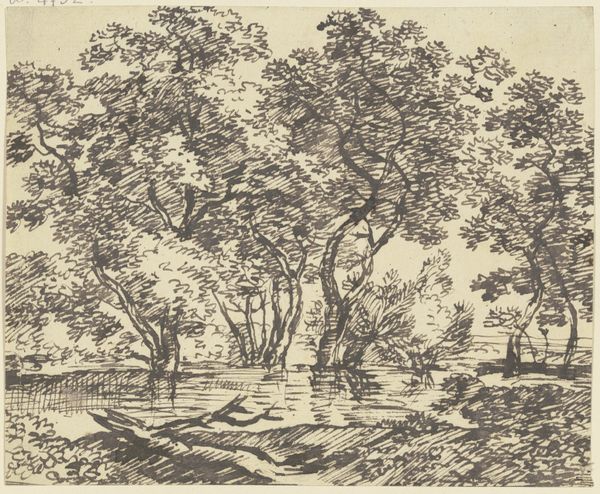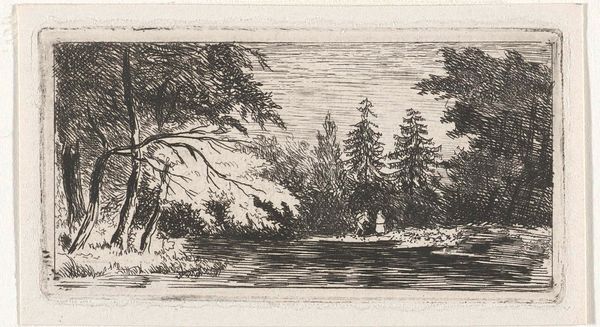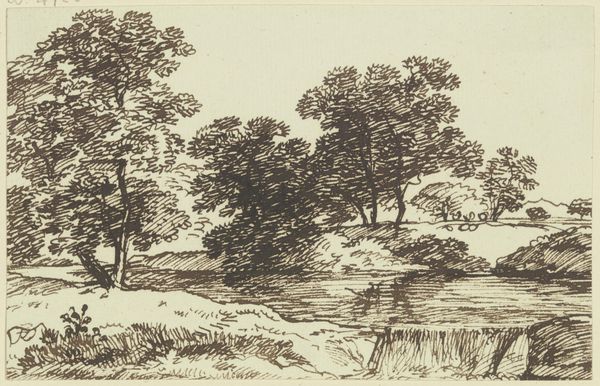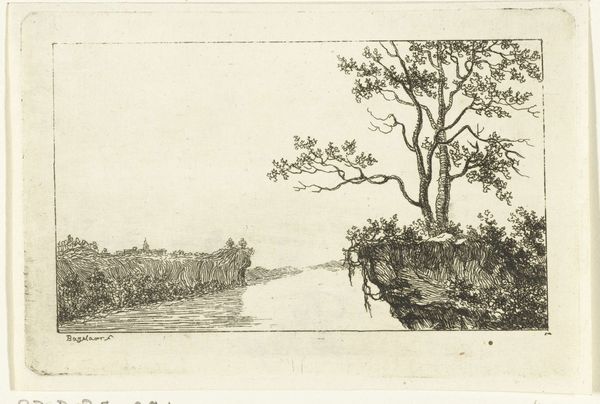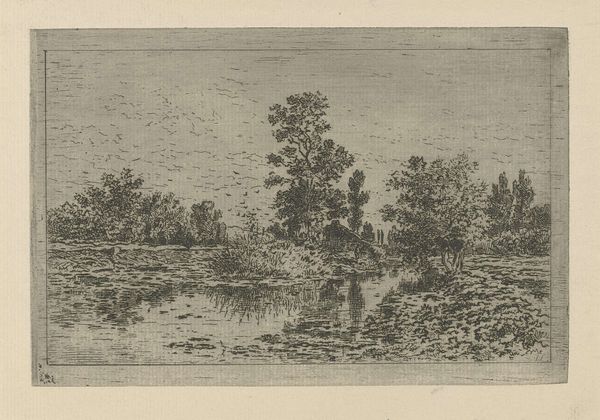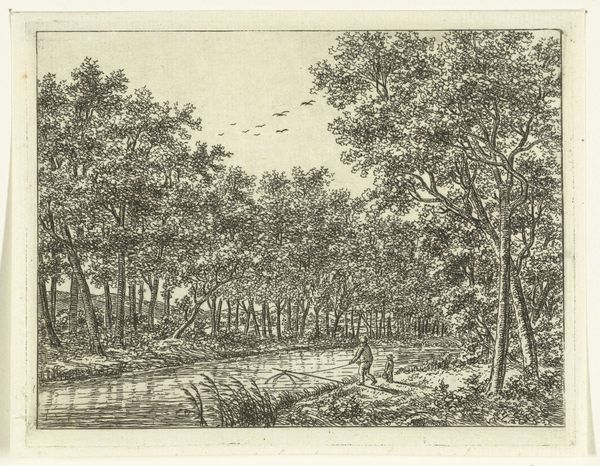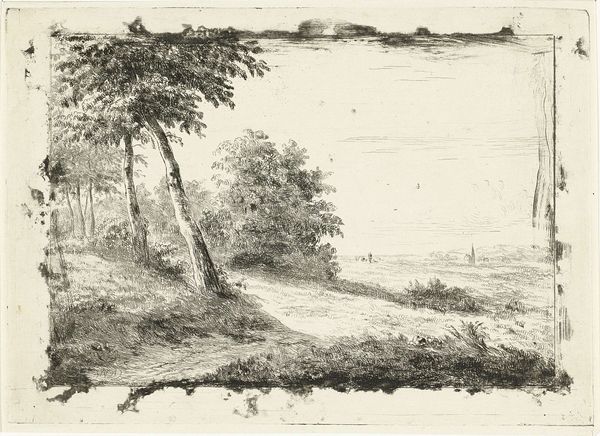
drawing, print, etching
#
drawing
# print
#
etching
#
landscape
#
romanticism
Dimensions: height 170 mm, width 211 mm
Copyright: Rijks Museum: Open Domain
Curator: Let's dive into this etching from 1818, "Landscape with pond, on the left a fisherman with a pointed hat" by Ernst Willem Jan Bagelaar. It strikes me as a peaceful scene, with all the trees reflected in the water...what catches your eye? Editor: Well, the level of detail, for one thing, given it's an etching. All those tiny lines, creating light and shadow. How much labor would have gone into creating this level of detail? Curator: Exactly! Consider the process itself. Etching demands a mastery of craft. Think about the engraver meticulously coating the plate, carefully etching the design with acid... We’re not just seeing a landscape, but a record of skilled labor, wouldn't you agree? And the print itself? Editor: Right. Prints democratized art. Suddenly landscapes weren’t just for the wealthy who could afford paintings. How would that have changed perceptions of landscape imagery? Curator: That's a great question. It’s not just about making art affordable, but making these pastoral images part of everyday life. These mass-produced images created a shared visual language that informed the era’s social understanding of nature and the place of labor within it. Consider how such images helped construct an idea of the Netherlands as a beautiful landscape that needs to be preserved and protected by its people. Editor: So, the very act of creating and circulating the print changed how people understood the landscape, making them more connected to their environment through accessible art. Is it then fair to see this image less about one individual's creativity, and more of a record about human labour and cultural values? Curator: Precisely! Looking at the marks left by the artist tells the true story here. I’ve really enjoyed discussing this piece with you. It's shown me how much the context of creation and materials influenced even something as apparently simple as a landscape print. Editor: Me too, this etching seems much deeper after exploring how materiality and labor meet the eye.
Comments
No comments
Be the first to comment and join the conversation on the ultimate creative platform.
